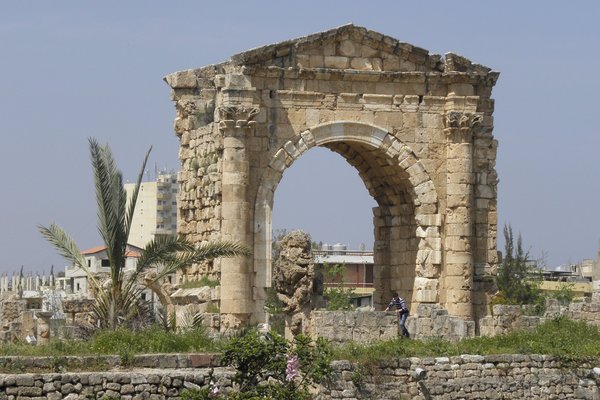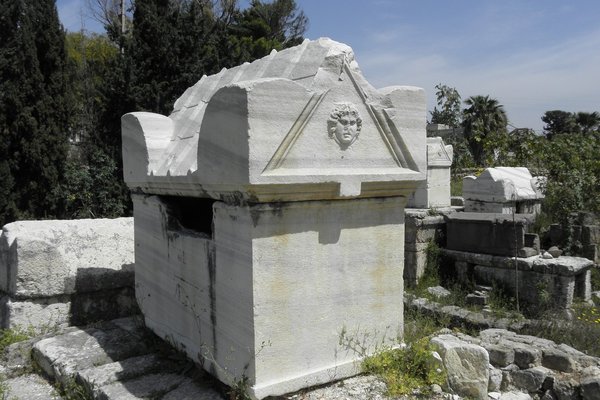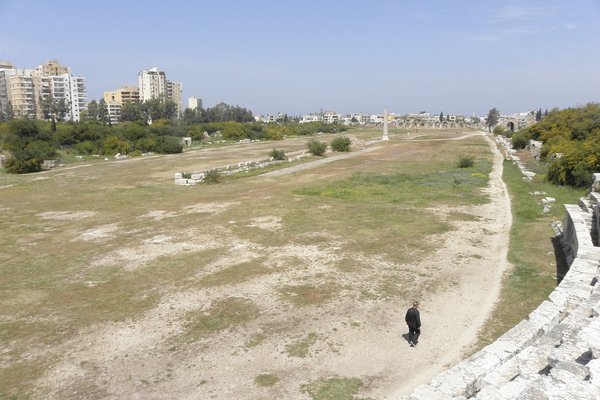Lebanon
Tyre
Tyre comprises the remains of the largest mercantile city of the Phoenicians.
In its commercial heyday around 1,000 BCE, the people of Tyre founded colonies from Greece to Carthage and Cadiz. The city was particularly known for the production of a rare and expensive sort of purple dye. The city over the ages saw Greek, Roman, Byzantine, Arab, Crusader, and Mameluk conquerors, of which the remains from Roman and Crusader times are the most prominent.
Community Perspective: The Hippodrome and necropolis are especially recommended. Tyre lies close to the border with Israel, so security warnings are often in place.
Site Info
Official Information
- Full Name
- Tyre (ID: 299)
- Country
- Lebanon
- Status
-
Inscribed 1984
Site history
History of Tyre
- 1984: Inscribed
- Inscribed
- Type
- Cultural
- Criteria
- iii
- vi
Links
- UNESCO
- whc.unesco.org
- Official
-
- visit-lebanon.org — Visit Lebanon
- Related
-
- livius.org — Tyre - by Livius, Articles on Ancient History
- middleeast.com — Tyre
- en.wikipedia.org — Link
All Links
UNESCO.org
- whc.unesco.org — whc.unesco.org/
Official Website
- visit-lebanon.org — Visit Lebanon
Related Resources
- livius.org — Tyre - by Livius, Articles on Ancient History
- middleeast.com — Tyre
- en.wikipedia.org — Link
News Article
- March 7, 2012 dailystar.com.lb — NGO says Tyre reconstruction "mutilating" historic port
Community Information
- Community Category
- Archaeological site: Phoenician
Travel Information
Red Zone Travel Advisory
Recent Connections
-
Asterix
In Astérix chez Rahàzade, they fly with…
-
Perfect Inscriptions
1984 -
Red Zone Travel Advisory
Lebanon South and East
Connections of Tyre
- Individual People
-
-
Ibn Battuta
"For sheer masonry there is no more marvelous or more remarkable construction in any town in the world; for the sea surrounds it on three sides and on the fourth side is a wall underneath which ships may enter and come to anchor." -
Alexander the Great
Tyre succumbed to the attack of Alexander of Macedonia who had blocked the straits by a dike. ,,, Alexander's legacy still lives on today, since Tyre has remained a peninsula instead of an island ever since. (wiki)See en.wikipedia.org
-
- Geography
-
-
Former Islands
Developed as an island city. Alexander the Great connected it to the mainland by a causeway during his siege (332BC). "The present-day city of Tyre covers a large part of the original island and has expanded onto and covers most of the causeway, which had increased greatly in width over the centuries because of extensive silt depositions on either side" (Wiki) -
Mediterranean shore
-
- History
-
-
Assyrian Empire
"Tyre started paying tribute to the Neo-Assyrians who gradually established sovereignty over Phoenicia." (wiki)See en.wikipedia.org
-
Babylonian Empire
Tyre successfully resisted a 6th-century-bc siege of 13 years by the (Neo-)Babylonian king Nebuchadrezzar II. It did however become a client state, and paid tribute to Babylon.See g.co
-
Ancient Roman colonies
-
Amarna Letters
-
Sieges and Battles
Alexander the Great 332BC -
The Crusades
After its capture by the Crusaders in 1124, it became a crucial economic center for the Kingdom of Jerusalem -
Silk Roads
Classic Silk Route; connected with Mediterranean sea routes: "the merchants of Tyre who navigated the Mediterranean waters and filled their warehouses with goods from their extensive colonies all around the Mediterranean coasts." (AB ev)See en.unesco.org
-
Phoenician world
Phoenician city-state -
Via Maris
-
Byzantine Empire and Civilization
In 395, Tyre became part of the Byzantine Empire and continued to flourish. ...The necropolis on mainland Tyre with more than three hundred sarcophagi from the Roman and Byzantine periods grew to be one of the largest in the world (wiki)See en.wikipedia.org
-
Oldest continuously inhabited cities
Tyre, 2750 BC -
Umayyad Caliphate
Carried out restoration and fortification works in the seaport of Tyre.
-
- World Heritage Process
-
-
Incorrect UNESCO 'Number of locations'
No of locations not clear. The "Reactive Monitoring Mission" of 2012 had considerable difficulty in establishing boundaries for the property using documentation provided from the time of inscription onwards. The UNESCO Web site description makes it clear however that there are at least 2 separate inscribed areas "In the modern town of Soûr, the property consists of two distinct sites: the one of the town, on the headland, and the one of the Necropolis of El Bass, on the continent." -
Perfect Inscriptions
1984
-
- Religion and Belief
-
-
Mentioned in the Bible
Frequently mentioned in the Old Testament
-
- Human Activity
-
-
Locations for playing sport
Roman Hippodrome (horse racing and chariot racing) -
Sea Ports
-
- Constructions
-
-
Triumphal Arches
2nd century Roman triumphal arch at Al-Bass -
Theatres and Opera Houses
Roman Theatre -
Necropolises
At Al-Bass
-
- WHS on Other Lists
-
-
Ramsar Wetlands
Tyre Beach, 1999 -
World Monuments Watch (past)
(1996) -
U.S. Ambassadors Fund
Conservation of Al Mubarakeh Tower in the Ancient City of Tyre (2006), Preservation of the Funerary Complex at Al Bass Necropolis at Tyre (2003)
-
- Timeline
-
-
Built in the 2nd century
Roman city: triumphal arch and hippodrome -
Built in the 12th century
Crusader city: castle walls and cathedral; "was captured by the Crusaders in 1124, becoming one of the most important cities of the Kingdom of Jerusalem" (wiki)
-
- WHS Hotspots
- Science and Technology
-
-
Underwater Archaeology
to include the underwater archaeological remains located to the south of the city (boundary change 2013)
-
- Visiting conditions
-
-
Foreigner prices
7500 Lebanese pounds for foreigners, 5000 for LebaneseSee www.mot.gov.lb
-
Red Zone Travel Advisory
Lebanon South and East
-
- WHS Names
-
-
Shortest WHS names
4 letters in English, 3 in French (Tyr)
-
- Literature & Film
-
-
Asterix
In Astérix chez Rahàzade, they fly with the magic carpet over Tyre and get shot with arrows. More prominently, Tyre is shown in L'Odyssée d'Astérix.
-
Shakespearean plays
Pericles, Prince of Tyre - "Tyre -a room in the Palace"
-
News
- dailystar.com.lb 03/07/2012
- NGO says Tyre reconstruction "muti…
Recent Visitors
Visitors of Tyre
- Afshin Iranpour
- Alexander Barabanov
- Alexander Lehmann
- Ali Zingstra
- Ammon Watkins
- Ask Gudmundsen
- Aspasia
- Atila Ege
- Bill Maurmann
- Bin
- Boj
- Bram de Bruin
- Chantal den Haan
- Christian Wagner
- Christoph
- Christravelblog
- Cirene Moraes
- Delphine Delaunay
- Els Slots
- Erik Jelinek
- Errol Neo
- Eva Kisgyorgy
- Fan Yibo
- George Gdanski
- giloudepuertorico
- Hadrianus
- Harry Mitsidis
- henryjiao18
- Iain Jackson
- Ivan Rucek
- Jarek Pokrzywnicki
- Jeffrey Chai
- João Aender
- Joyce van Soest
- Juha Sjoeblom
- Ken DJ
- KentishTownRocks
- Krijn
- Loic Pedras
- Luis Filipe Gaspar
- Lukasz Palczewski
- Maciej Gil
- Malgorzata Kopczynska
- marcel staron
- Martina Rúčková
- Mikan22
- Milan Jirasek
- Miloš Tašković
- Morodhi
- Nihal Ege
- palka25
- Persian Globetrotter
- PeterH
- Philipp Leu
- Philipp Peterer
- Randi Thomsen
- Rodinia
- Roger Ourset
- Roman Bruehwiler
- Sergio Arjona
- Solivagant
- Stanislaw Warwas
- Svein Elias
- Szucs Tamas
- Tarquinio_Superbo
- Thomas Buechler
- Thomas van der Walt
- Timothy C Easton
- tony0001
- triath
- Truls Brekke
- Vernon Prieto
- Walter
- Westwards
- Yongcheng Liu
- Zoë Sheng
Community Reviews
Show full reviews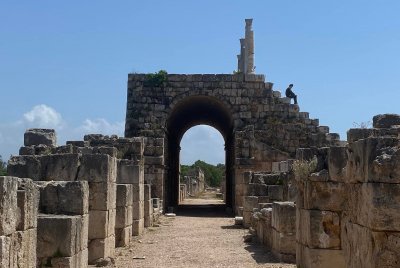
Visited in May 2023.It should be understood right away that the city is located in the south of Lebanon, a region controlled by Hezbollah, so this factor should be taken into account when planning a visit. I visited this city when the situation was more or less calm.Although these political factors are not particularly felt in the historical center, there is a specially designated area with recognizable symbols, but in the tourist zone tourists walk in shorts and short dresses, alcohol is sold, and no tension was felt.Also, I covered some gestalt, because in the last couple of years I visited several Mediterranean colonies founded by Phoenician Tyre, the most famous of them are Carthage and Cadiz. And from school, I remember the story of how Alexander the Great besieged the Phoenicians' fortress on the island for seven months, built a special dam and finally destroyed the city when he managed to capture it.The archaeological complex in Tyre occupies a huge area, divided into two zones, but it belongs to Roman times, the Phoenician city practically remained under the attack of the sea.In one zone (Al-Mina) there are an arena (for some reason rectangular), a palaestra, and baths. Theoretically, the foundations of the Crusader cathedral, where Emperor Frederick Barbarossa was supposed to be buried, should also be located there, but they cannot be reached.The second area (Al Bass) is more interesting as it has a giant necropolis with many different types of burials and a huge hippodrome with the remains …
Keep reading 0 comments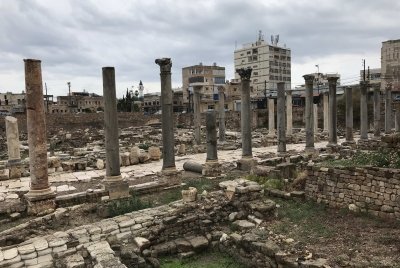
Tyre is an easy hour and a half hour drive south from Beirut. Many official travel advice recommend against travelling to this part of Lebanon, but the southern border is peaceful now and though the area looks a bit rough around the edges, the double site is very nice. We started with the Al Baas site with ruins of a Roman hippodrome, tombs with holes dug out probably by grave robbers, large cobbled route with a lovely arch. And outside it, a bit of a dishevelled town that makes it really interesting. There's a museum on site, but it's in a process of a very gradual restoration, with no info when it's going to be ready for visitors. To get some information on the site, just read your tour guides before the visit or buy a booklet from the ticket office. There's a parking on-site and the entrance is a bit inconspicuous, so just trust your online maps.
The second site is Al Mina about three kilometres away in a residential area. There is a street across the entrance, we found parking spot easily there. On site are loads of columns, a lovely views of the sea with a submerged harbour. There's also some kind of large rectangular space that we read was apparently an arena for water sports. And a couple of mosaics, but don't expect Old Paphos or Villa Romana. A nice visit we finished by stopping at Sidon by the Crusader castle (there's loads of restaurants …
Keep reading 0 comments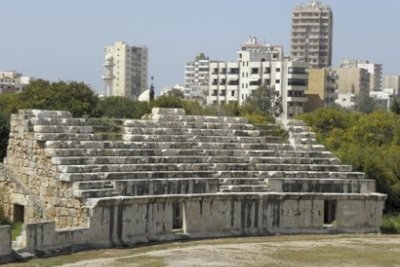
This is the third Lebanese WHS displaying mainly Roman remains. And there is another one (Anjar) heavily influenced by Roman architecture. It does not make me feel very happy that I still 'have to' check out dozens more of them around the Mediterranean - in Algeria, Tunisia, Libya for example. Roman remains have withstood the test of times so much better than that of other civilizations, so it seems.
I visited Tyre on a day trip by public transport from Beirut. Although it is only 80km away, the bus took about 2 hours (including a change at Sidon). Tyre lies south of the Litani river, which means that is in the former danger zone between Lebanon and Israel. UNIFIL troops in their white tanks still patrol the streets. There is some ostentatious flag-waving and billboards with political/religious leaders going on, but nothing too aggressive. I only saw my first billboard featuring the head of Ayatollah Khomeini, and a medical clinic named after him.
Daily life in the streets of Tyre is as laid back as anywhere in Lebanon. I started my sightseeing at the Al-Mina ruins in the center of town. I was the only visitor. The site consists primarily of rows and more rows of columns. After about 15 minutes you have seen it all.
Then it's a further walk of about 20 minutes to get to the other archeological site, Al-Bass, at the edge of town. You can see the hippodrome from afar, but unfortunately, …
Keep reading 0 comments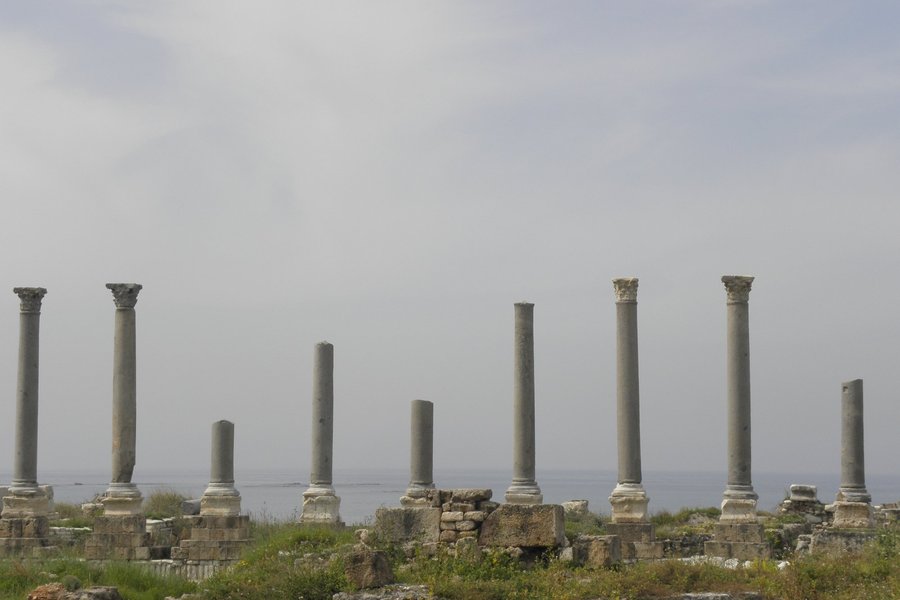
There are a few sites where if you want to visit, timing is important. Tyre is one of these sites because its so close to the Lebanese Israel border and comes into play during any conflict. Its no secret that Hezbollah (Party of God) controls this part of Southern Lebanon and often the region is close to travel. After the last conflict with Israel in 2006, Southern Lebanon was closed to tourists for a few years due to dangers from unexploded ordinance and the roads being bombed out.
Nonetheless, the situation has calmed down and there is a window of opportunity and I made it there last month in April 2010. The drive down the coast is so pretty and idyllic but you know immediately when you are close to Tyre because the roads would be lined with the Hezbollah yellow flags and there are banners of Iranian mullahs everywhere. Also you see many UN troops in their blue helmets guarding intersections.
Beyond those signs, everything else seems perfectly normal. In fact when we had lunch in a seaside inn, the owner encouraged us to return in the evening because he transforms the dining area into a bar with rock music etc. Not as conservative as you would expect.
Tyre was founded by the Phoenicians and they prospered as sea faring traders. The commerce that made Tyre famous was that they could harvest a certain seashell called Murex that produced a purple dye used by royalty across the Mediterranean. Unfortunately …
Keep reading 0 comments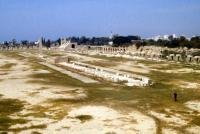
Tyre is an ancient town whose history is known from around 2700BCE. In particular it was an earlier home of the Phoenicians and it was from there that they set out to found Carthage. Today it is a modern Mediterranean city surrounded by 3 large archaeological sites with remains covering Phoenician, Greek, Roman, Byzantine and+ Crusader periods.
Most of the remains are at around ground level with the odd pillar and it is difficult to make out a great deal from the confusing jumble of stones. This is no Baalbek or Palmyra with huge ruined buildings.
One site does however merit a special visit if you are passing by – the Roman Hippodrome (photo). It has been partly reconstructed and is said to have been used for the chariot scenes in the film “Ben Hur”!
Keep reading 0 comments
